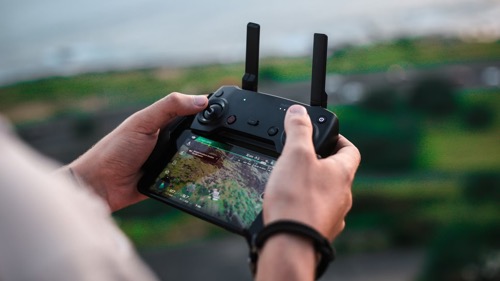
RC transmitters are the vital link between you and your RC vehicle, allowing you to wirelessly control models like cars, boats, drones, and airplanes. Choosing the right transmitter and properly setting it up can be overwhelming for beginners but is crucial for enjoying the hobby. In this comprehensive guide, we will answer all of your questions about RC transmitters. You’ll learn about the different types of transmitters, their key features, how to pick the right one for your needs, steps for proper setup and tuning, info on major brands, and much more. Whether you’re new to the hobby or a seasoned RC pilot looking to upgrade, this guide will provide extensive knowledge on RC transmitters to help you make an informed purchasing decision and master your new controller.
What are RC transmitters?
RC transmitters, also known as radio control transmitters, are handheld devices used to control remote controlled vehicles like drones, cars, boats, and airplanes. They allow the user to wirelessly send signals to the receiver installed in the RC vehicle, instructing it what to do. For example, an RC transmitter for a drone will have controls for things like throttle, yaw, pitch, and roll. When the user moves these controls on the transmitter, it sends radio signals to the receiver on the drone, allowing the user to steer the drone in different directions, adjust its speed, and perform maneuvers.
RC transmitters come in different forms depending on the type of RC vehicle they are designed for, but most contain basic controls like steering, throttle, and trim adjustments. More advanced RC transmitters may also have telemetry capabilities that display real-time data from sensors on the RC vehicle, such as speed, battery level, and GPS location. The transmitter shape can vary as well – pistol grips, wheel types, or even gamepad-style controllers. Despite some variations, the core purpose of any RC transmitter is to wirelessly send user input to an RC vehicle from a distance.

How do RC transmitters work?
An RC transmitter works by sending radio signals to a receiver in order to control the RC vehicle. The transmitter itself contains a radio frequency module that generates and transmits these signals. When the user moves any of the controls like the steering wheel or throttle trigger, it sends an electronic signal to the module.
The module then encodes these signals into radio waves and transmits them through the attached antenna. Different channels and frequencies are used to prevent interference with other RC transmitters that may be operating nearby. Common frequencies used are 27MHz, 49MHz, and 2.4GHz.
The receiver inside the RC vehicle picks up the transmitted signal through its own antenna. It then decodes the radio waves back into electronic signals that the vehicle’s logic circuits can understand. Based on the input from the transmitter, the circuits actuate the servos, motors, and other components needed to drive the vehicle.
For example, if the transmitter signal instructs the vehicle to turn left, the receiver will interpret this and send power to the left motor while reducing power to the right motor. The vehicle then makes a left turn accordingly. Two-way communication is possible with advanced RC transmitters using telemetry, which allows vehicle data like speed and battery voltage to be sent back and displayed on the transmitter.
This exchange of radio signals between the handheld transmitter and the receiver in the vehicle allows the user to wirelessly control the RC car, boat, drone, or plane from a distance. The system provides sufficient radio range for most RC hobbies.

What are the different types of RC transmitters?
Pistol Grip Transmitters
The most common type of RC transmitter has a pistol grip design, resembling a gun handle. The trigger on the grip controls the throttle while the wheel mounted on top controls steering. Pistol grips are popular for controlling cars, trucks, and boats, providing easy and comfortable steering and throttle control. Many pistol grip transmitters also include toggle switches and buttons to control other functions.
Wheel Transmitters
These have a large steering wheel mounted on top and are optimized for controlling RC cars or trucks, especially fast, high-performance models for racing. The wheel provides precise one-handed steering while the throttle is controlled with a trigger, button or slider on the side. Some advanced wheel transmitters have built-in displays with telemetry.
Box-Style Transmitters
This style has a gamepad-like shape with dual joysticks and resembles a gaming console controller. It allows finger-tip control of functions on both sides, making it well-suited for drones and planes. One joystick controls throttle and rotation, while the other controls forward/backward and left/right motion. The layout enables complex maneuvers using just the thumbs.
Simulator Transmitters
These function and look just like a regular RC transmitter but are designed to work with RC vehicle simulators on a PC instead of with a real vehicle. This allows practicing RC skills virtually before attempting to drive the real vehicle. Some can even be connected to a computer and used to control a vehicle.

What are the key features of RC transmitters?
Controls: The primary controls include the steering wheel/joystick, throttle trigger/lever, trim buttons and various toggles and switches to operate different channels and functions. Higher-end transmitters offer smoother, more precise control for better handling.
Ergonomics: The controller design, button placement, grip style and overall comfort when holding the transmitter. Good ergonomics reduces hand fatigue during long driving sessions.
Display: Basic transmitters have just LED lights and battery indicators. Advanced ones have built-in LCD or OLED displays to show telemetry data, trim settings, model selection and other information.
Range: Maximum distance the radio signal can travel from the transmitter to the receiver. Longer range provides more operational freedom and flexibility. Advanced transmitters boast ranges up to 1 mile or more.
Channels: The number of controllable channels, with each channel responsible for a motor/servo. More channels allows control over more complex vehicles with accessories. 6-7 channels is common for cars while planes require 8+ channels.
Model Memory: Number of vehicle models/profiles that can be saved to recall customized transmitter settings for each model. High model memory allows using one transmitter across different RC vehicles.
Battery Type: Higher-end transmitters use rechargeable Li-Po packs while basic ones need disposable AAA batteries. Rechargeable packs offer longer use per charge but cost more initially.
Telemetry: Advanced transmitters can receive and display live data from the RC vehicle such as speed, engine RPM, temperature and battery voltage. This helps monitor vehicle status in real-time.
Compatibility: Transmitters may only work with receivers of the same brand or just certain protocols. Some are compatible with a wider range of receivers.

How to choose the right RC transmitter?
Consider the vehicle type: Cars require basic 2-channel pistol grip transmitters while planes and drones need more advanced box-style transmitters with extra controls and dual joysticks. Make sure the transmitter is designed to suit your specific RC vehicle.
Determine the number of channels: Entry level RC vehicles can be operated with just 2-3 channels while larger drones and planes require 5-8 channels to control multiple motors, lights and accessories.
Check the frequency: RC transmitters and receivers must use the same frequency band, usually 27MHz, 49MHz or 2.4GHz. 2.4GHz offers the best range with minimal interference.
Consider the model memory: Multiple model memory allows programming settings for different RC vehicles. Around 6-10 model memory is good for casual use.
Compare range/distance: Average RC range is 100-200 yards for basic models and up to 500 yards or more for advanced radios. Consider your operational area.
Review display and controls: Larger displays and ergonomic controls offer better convenience and ease of use.
Look for useful features: Telemetry, rechargeable batteries, servo compatibility and model naming can provide added benefits.
Check compatibility: The transmitter has to work with your existing receivers or the ones you plan to purchase for your vehicle.
Consider budget: RC transmitters range from $50 for basic units to $500 for high-end computerized radios. Set a budget while accounting for key features.

What are the major brands in the RC transmitter market?
Traxxas: Traxxas is one of the most well-known brands in RC vehicles and their transmitters are popular for controlling Traxxas RC cars and trucks. Their TQi transmitter offers a pistol grip design, LCD screen, telemetry and TSM stability assistance. The Traxxas Link app allows for transmitter tuning and upgrades.
Spektrum: Spektrum specializes in advanced RC transmitters used largely for airplanes and drones. Their DX series features DSMR radio technology for superior range and response times. High-end Spektrum controllers have large displays, multi-model memory, voice alerts and programmable buttons.
Futaba: Futaba is a pioneer in RC technology and their transmitters offer excellent performance for all RC vehicle types. The 4PLS, 7PX and 18MZ lines contain fully-programmable transmitters with color screens, telemetry and extensive configurability. Many top RC pilots rely on Futaba radios.
FlySky: FlySky makes very affordable entry-level RC transmitters ideal for beginners in the hobby. The FS-i6 and FS-i6X models are popular for their simple operation, detachable wheel, and compatibility with most FlySky receivers. They offer good value without breaking the bank.
FrSky: FrSky focuses heavily on UAV and drone transmitters, like the Taranis X9D, X-Lite and Q X7 models. Their transmitters contain OpenTX firmware that is highly flexible. Many FrSky transmitters work with Lua custom scripts for advanced customization.
JR: JR has decades of experience manufacturing radio gear for RC use. They offer transmitters covering planes, helicopters, cars and multirotors for all skill levels. Many JR transmitters feature ADS-B receiver integration to avoid full-scale aircraft.
What are the setup and tuning methods for RC transmitters?
Binding: This first step pairs the transmitter to the receiver so they communicate properly. The binding process involves putting the receiver in bind mode and powering on the transmitter while holding a specific button. Once bound, the receiver will only respond to that specific transmitter.
Controls Setup: The various controls like throttle, steering and switches must be assigned to the correct channels on the receiver. This step maps the physical controls on the transmitter to their corresponding actions on the RC vehicle.
Centering/Trims: The trims or subtrims are adjusted so the vehicle’s wheels and servos are centered properly. This removes unwanted turning or movement when controls are at neutral position.
Dual Rates/Expo: Dual rate allows setting different amounts of servo travel on a single control. Expo is exponential rate that softens controls around the center but allows greater servo throw at full control input. This helps refine steering and throttle precision.
Model Setup: Advanced transmitters allow saving customized profiles for each different RC vehicle model. This stores specific trim and dual rate settings that can be recalled when using that model.
End Points: End points adjust the maximum servo travel available for a specific channel. This can be reduced to limit the steering angle or throttle range in order to make a vehicle easier to control.
Reversing: Channel reversing is needed if a servo is moving the wrong way. This simple software fix swaps the direction of servo motion relative to the control.
Failsafe: Failsafe protects from loss of radio signal by setting preset servo positions. For example, throttle can be set to zero if signal is lost to prevent a runaway vehicle.
Enjoyed this guide of RC Transmitters? Then be sure to check out our other RC Rating guides.